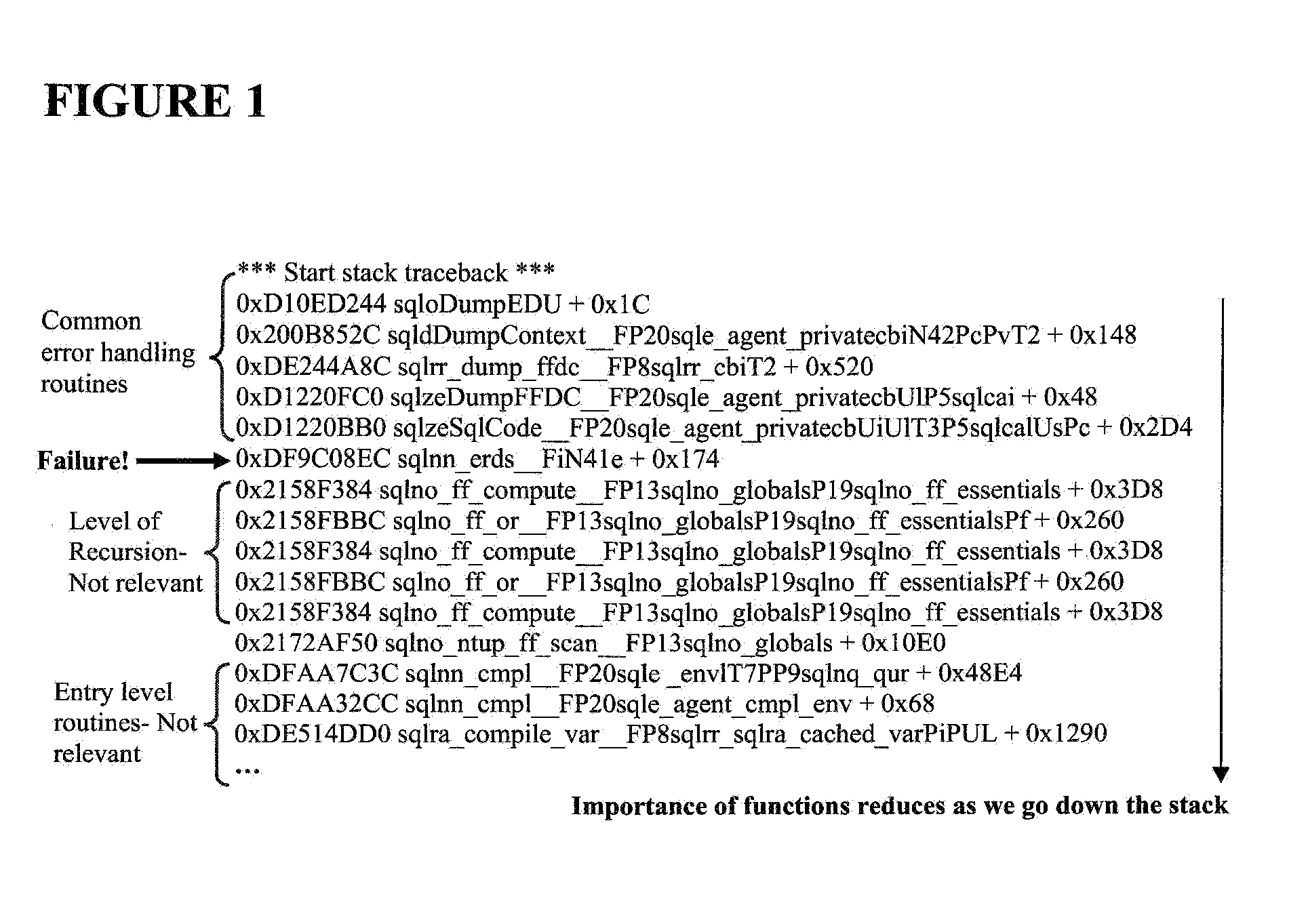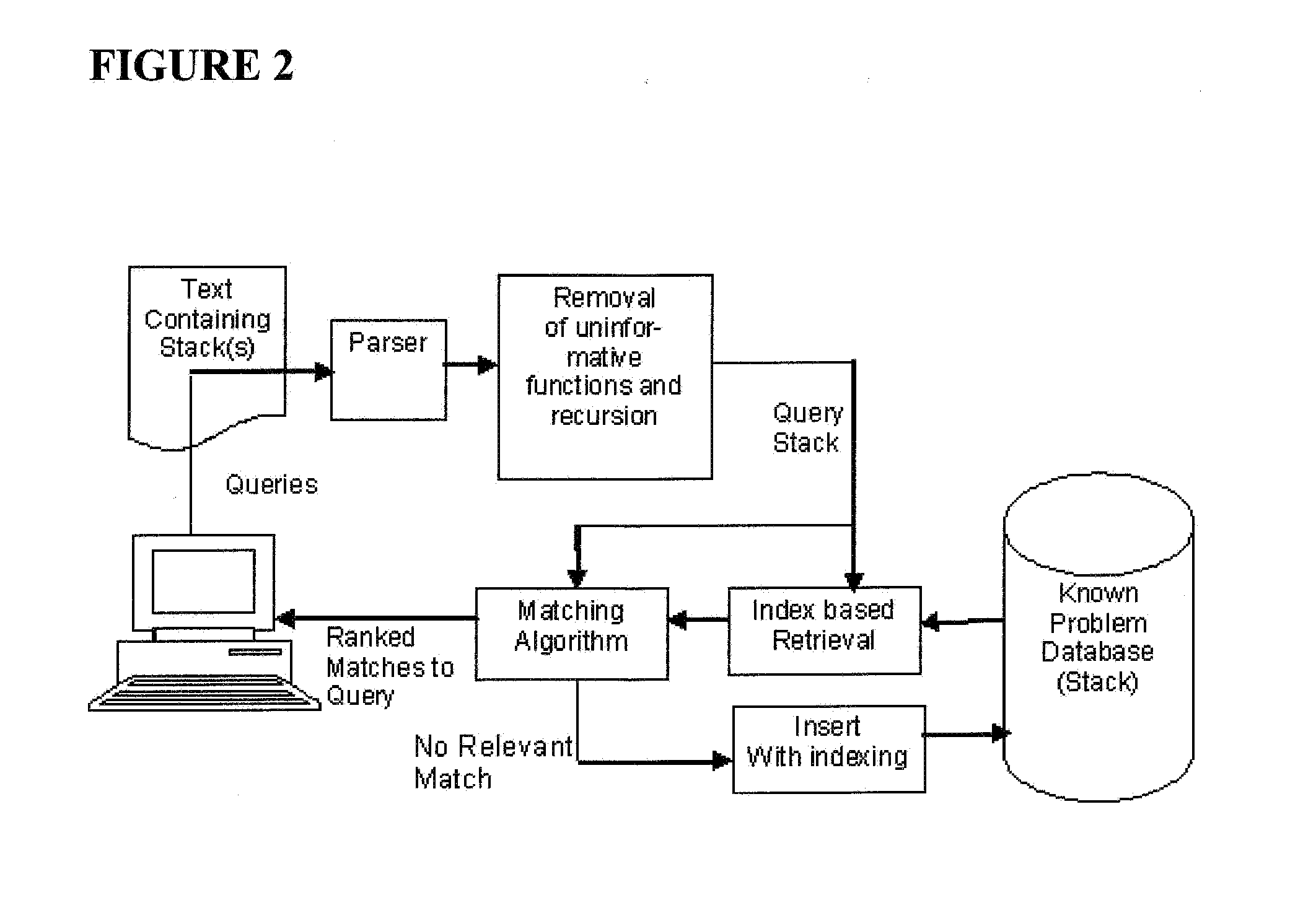System and method for matching a plurality of ordered sequences with applications to call stack analysis to identify known software problems
a technology of ordered sequences and stack analysis, applied in the field of matching ordered sequences, can solve the problems of challenging problems beyond the scope of current natural language understanding technology, high labor cost of customer support staff, and inability to identify known software problems, so as to reduce search, significantly affect recall during matching, and increase precision
- Summary
- Abstract
- Description
- Claims
- Application Information
AI Technical Summary
Benefits of technology
Problems solved by technology
Method used
Image
Examples
Embodiment Construction
[0028]Referring now to FIG. 1, a typical C++ call stack from IBM DB2® is shown, illustrating its characteristics (“DB2” is a registered trademark of the IBM Corporation). Each line in the stack trace begins with a hex number denoting the function's address in the memory, followed by the function name separated by two underscores from the C++ “mangled” names of the arguments of that function, and finally the offset of the instruction from the start of the function. The top of the stack is the name of deepest function in the call flow and the bottom of the stack is the entry point function name. By coding convention, whenever an error or exception is detected, some error handling functions are invoked to handle the error. Hence, the top few functions in the call stack are typically error handling functions, which do not provide information about the nature of the problem. We call these uninformative functions. On the other hand, since the bottom of the stack is the entry point which w...
PUM
 Login to View More
Login to View More Abstract
Description
Claims
Application Information
 Login to View More
Login to View More - R&D
- Intellectual Property
- Life Sciences
- Materials
- Tech Scout
- Unparalleled Data Quality
- Higher Quality Content
- 60% Fewer Hallucinations
Browse by: Latest US Patents, China's latest patents, Technical Efficacy Thesaurus, Application Domain, Technology Topic, Popular Technical Reports.
© 2025 PatSnap. All rights reserved.Legal|Privacy policy|Modern Slavery Act Transparency Statement|Sitemap|About US| Contact US: help@patsnap.com



